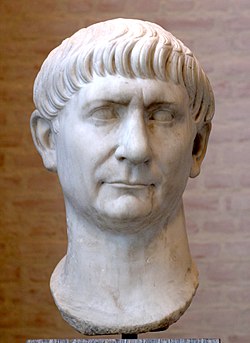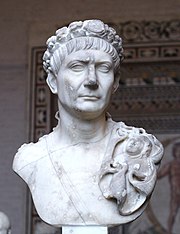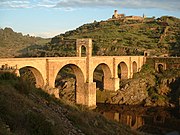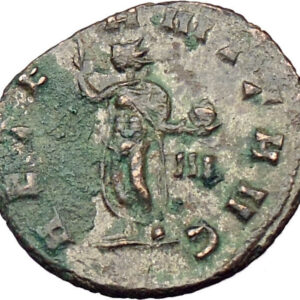|
Trajan
–
Roman Emperor
: 98-117 A.D. –
Silver
Denarius 18mm (3.14 grams) Struck circa 98-117 A.D.
Reference: RIC 119; Sear3123; RSC 86.
IMP TRAIANO AVG GER DAC P M TR P, laureate bust right, draped far shoulder
COS V P P SPQR OPTIMO PRINC, Aequitas seated left holding cornucopiae and
scales.
You are bidding on the exact item pictured,
provided with a Certificate of Authenticity and Lifetime Guarantee of
Authenticity.
The cornucopia (from Latin cornu copiae) or horn of plenty
is a symbol of abundance and nourishment, commonly a large horn-shaped container
overflowing with produce, flowers, nuts, other edibles, or wealth in some form.
Originating in
classical antiquity
, it has continued as a
symbol in
Western art
, and it is particularly associated
with the
Thanksgiving
holiday in
North America
.

Allegorical
depiction of the Roman
goddess
Abundantia
with a cornucopia, by
Rubens
(ca. 1630)
In Mythology
Mythology
offers multiple
explanations of the origin
of the cornucopia.
One of the best-known involves the birth and nurturance of the infant
Zeus, who had to be hidden from his devouring father
Cronus
. In a cave on
Mount Ida
on the island of
Crete
, baby Zeus was cared for and protected by
a number of divine attendants, including the goat
Amalthea
(“Nourishing Goddess”), who fed him
with her milk. The suckling future king of the gods had unusual abilities and
strength, and in playing with his nursemaid accidentally broke off one of her
horns
, which then had the divine power to
provide unending nourishment, as the foster mother had to the god.
In another myth, the cornucopia was created when
Heracles
(Roman
Hercules
) wrestled with the river god
Achelous
and wrenched off one of his horns;
river gods were sometimes depicted as horned. This version is represented in the
Achelous and Hercules
mural painting
by the
American Regionalist
artist
Thomas Hart Benton
.
The cornucopia became the attribute of several
Greek
and
Roman deities
, particularly those associated
with the harvest, prosperity, or spiritual abundance, such as personifications
of Earth (Gaia
or
Terra
); the child
Plutus
, god of riches and son of the grain
goddess Demeter
; the
nymph
Maia
; and
Fortuna
, the goddess of luck, who had the power
to grant prosperity. In
Roman Imperial cult
, abstract Roman deities who
fostered peace (pax
Romana) and prosperity were also depicted with a cornucopia,
including Abundantia
, “Abundance” personified, and
Annona
, goddess of the
grain supply to the city of Rome
.
Pluto
, the classical ruler of the underworld in
the
mystery religions
, was a giver of agricultural,
mineral and spiritual wealth, and in art often holds a cornucopia to distinguish
him from the gloomier Hades
, who holds a
drinking horn
instead.
Modern depictions
In modern depictions, the cornucopia is typically a hollow, horn-shaped
wicker basket filled with various kinds of festive
fruit
and
vegetables
. In North America, the cornucopia
has come to be associated with
Thanksgiving
and the harvest. Cornucopia is
also the name of the annual November Wine and Food celebration in
Whistler
, British Columbia, Canada. Two
cornucopias are seen in the
flag
and
state seal
of
Idaho
. The Great
Seal
of
North Carolina
depicts Liberty standing and
Plenty holding a cornucopia. The coat of arms of
Colombia
,
Panama
,
Peru and
Venezuela
, and the Coat of Arms of the State of
Victoria, Australia
, also feature the
cornucopia, symbolising prosperity.
The horn of plenty is used on body art and at Halloween, as it is a symbol of
fertility, fortune and abundance.
-
Base of a statue of
Louis XV of France
Aequitas (genitive
aequitatis) is the
Latin concept
of justice, equality, conformity,
symmetry, or fairness. It is the origin of the English word “equity”. In
ancient Rome
, it could refer to either the
legal concept of
equity
, or fairness between individuals.
Cicero
defined aequitas as “tripartite”:
the first, he said, pertained to the gods above (ad superos deos) and is
equivalent to
pietas
, religious obligation; the second,
to the Manes
, the underworld spirits or spirits of the
dead, and was
sanctitas
, that which is sacred; and the
third pertaining to human beings (homines) was iustitia,
“justice”.
During the
Roman Empire
, Aequitas as a divine
personification
was part of the
religious propaganda
of the
emperor
, under the name Aequitas
Augusti
, which also appeared on coins. She
is depicted on coins holding a
cornucopia
and a
balance scale
(libra), which was more
often a symbol of “honest measure” to the Romans than of justice.
Marcus Ulpius Nerva Traianus, commonly known as Trajan (18
September, 53 – 8 August, 117), was a
 Roman Roman
Emperor who reigned from AD 98 until his death in AD 117. Born Marcus Ulpius Traianus into a non-patrician
family
in the
Hispania Baetica
province (modern day
Spain
), Trajan
rose to prominence during the reign of emperor
Domitian
,
serving as a general in the
Roman army
along the
German frontier
, and successfully crushing the revolt of
Antonius Saturninus
in 89. On September 18, 96, Domitian was succeeded by
Marcus Cocceius Nerva
,
an old and childless senator who proved to be unpopular with the army. After a
brief and tumultuous year in power, a revolt by members of the
Praetorian Guard
compelled him to adopt the more popular Trajan as his heir
and successor. Nerva died on January 27, 98, and was succeeded by his adopted
son without incident.
As a civilian administrator, Trajan is best known for his extensive public
building program, which reshaped the city of
Rome and left
multiple enduring landmarks such as
Trajan’s Forum
,
Trajan’s Market
and
Trajan’s Column
. It was as a military commander however that Trajan
celebrated his greatest
triumphs
. In 101, he launched a
punitive expedition
into the kingdom of
Dacia
against
king Decebalus
, defeating the Dacian army near
Tapae
in 102, and finally conquering Dacia completely in 106. In 107, Trajan
pushed further east and annexed the
Nabataean kingdom
, establishing the province of
Arabia Petraea
. After a period of relative peace within the Empire, he
launched his final campaign in 113 against
Parthia
,
advancing as far as the city of
Susa in 116, and
expanding the Roman Empire to its greatest extent. During this campaign Trajan
was struck by illness, and late in 117, while sailing back to Rome, he died of a
stroke
on
August 9
,
in the city of
Selinus
. He was
deified
by the Senate and his ashes were laid to rest under
Trajan’s Column
. He was succeeded by his adopted son (not having a
biological heir) Publius Aelius Hadrianus
—commonly known as Hadrian.
As an emperor, Trajan’s reputation has endured – he is one of the few rulers
whose reputation has survived the scrutiny of nineteen centuries of history.
Every new emperor after him was honoured by the Senate with the prayer
felicior Augusto, melior Traiano, meaning “may he be luckier than
Augustus
and better than Trajan”. Among
medieval
Christian theologians, Trajan was considered a
virtuous pagan
, while the 18th century historian
Edward Gibbon
popularized the notion of the
Five Good Emperors
, of which Trajan was the second.
Early life and
rise to power
Trajan was born on September 18, 53 in the Roman province of
Hispania Baetica
(in what is now
Andalusia
in modern Spain), a province that was thoroughly Romanized and called southern
Hispania, in the city of
Italica
,
where the
Italian
families were paramount. Of
Italian
stock himself, Trajan is frequently but misleadingly designated the
first provincial emperor.
Trajan was the son of
Marcia
and
Marcus Ulpius Traianus
, a prominent
senator
and general from the famous
Ulpia
gens.
Trajan himself was just one of many well-known Ulpii in a line that continued
long after his own death. His elder sister was
Ulpia Marciana
and his niece was
Salonina Matidia
. The
patria
of
the Ulpii was Italica
, in Spanish Baetica,
where their ancestors had settled late in the third century B.C. This indicates
that the Italian origin was paramount, yet it has recently been cogently argued
that the family’s ancestry was local, with Trajan senior actually a Traius who
was adopted into the family of the Ulpii.
As a young man, he rose through the ranks of the
Roman army
,
serving in some of the most contentious parts of the Empire’s frontier. In
76–77, Trajan’s father was
Governor
of
Syria
(Legatus
pro praetore Syriae), where Trajan himself remained as
Tribunus
legionis. Trajan was nominated as
Consul
and
brought
Apollodorus of Damascus
with him to
Rome around 91.
Along the
Rhine River
, he took part in the Emperor
Domitian
‘s
wars while under Domitian’s successor,
Nerva
, who was
unpopular with the army and needed to do something to gain their support. He
accomplished this by naming Trajan as his adoptive son and successor in the
summer of 97. According to the
Augustan History
, it was the future Emperor
Hadrian
who
brought word to Trajan of his adoption.
When Nerva died on January 27, 98, the highly respected Trajan succeeded without
incident.
His
reign
The new Roman emperor was greeted by the people of Rome with great
enthusiasm, which he justified by governing well and without the bloodiness that
had marked Domitian’s reign. He freed many people who had been unjustly
imprisoned by Domitian and returned a great deal of private property that
Domitian had confiscated; a process begun by Nerva before his death. His
popularity was such that the
Roman
Senate
eventually bestowed upon Trajan the
honorific
of optimus, meaning “the best”.
Dio Cassius
, sometimes known as Dio, reveals that Trajan drank heartily and
was involved
with boys
. “I know, of course, that he was devoted to boys and to wine, but
if he had ever committed or endured any base or wicked deed as the result of
this, he would have incurred censure; as it was, however, he drank all the wine
he wanted, yet remained sober, and in his relation with boys he harmed no one.”
This sensibility was one that influenced his governing on at least one occasion,
leading him to favour the king of Edessa out of appreciation for his handsome
son: “On this occasion, however,
Abgarus
, induced partly by the persuasions of his son Arbandes, who was
handsome and in the pride of youth and therefore in favour with Trajan, and
partly by his fear of the latter’s presence, he met him on the road, made his
apologies and obtained pardon, for he had a powerful intercessor in the boy.”
Dacian
Wars
Main article:
Trajan’s Dacian Wars
It was as a military commander that Trajan is best known to history,
particularly for his conquests in the
Near East
,
but initially for the two wars against
Dacia
— the
reduction to client kingdom (101-102), followed by actual incorporation to the
Empire of the trans-Danube border kingdom of Dacia—an area that had troubled
Roman thought for over a decade with the unfavourable (and to some, shameful)
peace negotiated by
Domitian
‘s
ministers
In the first war c. March–May 101, he launched a vicious attack into the kingdom
of Dacia
with
four legions,
crossing to the northern bank of the
Danube River
on a stone bridge he had built, and defeating the Dacian army
near or in a
mountain pass
called
Tapae
(see
Second Battle of Tapae
). Trajan’s troops were mauled in the encounter,
however and he put off further campaigning for the year to heal troops,
reinforce, and regroup.
During the following winter, King
Decebalus
launched a counter-attack across the
Danube
further
downstream, but this was repulsed. Trajan’s army advanced further into Dacian
territory and forced King Decebalus to submit to him a year later, after Trajan
took the Dacian capital/fortress of
Sarmizegethusa
. The Emperor Domitian had campaigned against
Dacia from 86 to 87
without securing a decisive outcome, and Decebalus had
brazenly flouted the terms of the peace (89 AD) which had been agreed on
conclusion of this campaign.
Trajan now returned to Rome in triumph and was granted the title Dacicus
Maximus. The victory was celebrated by the
Tropaeum Traiani
. Decebalus though, after being left to his own devices, in
105 undertook an invasion against Roman territory by attempting to stir up some
of the tribes north of the river against her.
Trajan took to the field again and after building with the design of
Apollodorus of Damascus
his
massive bridge over the Danube
, he conquered Dacia completely in 106.
Sarmizegethusa was destroyed,
Decebalus
committed suicide
,
and his severed head was exhibited in Rome on the steps leading up to the
Capitol
. Trajan built a new city, “Colonia Ulpia Traiana Augusta Dacica
Sarmizegetusa”, on another site than the previous Dacian Capital, although
bearing the same full name, Sarmizegetusa. He resettled Dacia with Romans and
annexed it as a province of the Roman Empire. Trajan’s Dacian campaigns
benefited the Empire’s finances through the acquisition of Dacia’s gold mines.
The victory is celebrated by
Trajan’s Column
.
Expansion
in the East
At about the same time
Rabbel II Soter
, one of Rome’s client kings, died. This event might have
prompted the annexation of the
Nabataean kingdom
, although the manner and the formal reasons for the
annexation are unclear. Some epigraphic evidence suggests a military operation,
with forces from
Syria
and
Egypt
. What is clear, however, is that by 107, Roman legions were stationed
in the area around Petra
and
Bostra
, as is shown by a papyrus found in Egypt. The empire gained what
became the province of
Arabia Petraea
(modern southern
Jordan
and
north west
Saudi
Arabia
).
Period
of peace
The next seven years, Trajan ruled as a civilian emperor, to the same acclaim
as before. It was during this time that he corresponded with
Pliny the Younger
on the subject of how to deal with the
Christians
of Pontus
, telling Pliny to leave them alone unless they were openly practicing
the religion. He built several new buildings, monuments and roads in
Italia
and his native
Hispania
.
His magnificent complex in Rome raised to commemorate his victories in
Dacia
(and
largely financed from that campaign’s loot)—consisting of a
forum
,
Trajan’s Column
, and Trajan’s Market still stands in Rome today. He was also
a prolific builder of triumphal arches
, many of which survive, and rebuilder
of roads (Via
Traiana and
Via Traiana Nova
).
One notable act of Trajan was the hosting of a three-month
gladiatorial
festival in the great
Colosseum
in Rome (the precise date of this festival is unknown). Combining chariot
racing, beast fights and close-quarters gladiatorial bloodshed, this gory
spectacle reputedly left 11,000 dead (mostly slaves and criminals, not to
mention the thousands of ferocious beasts killed alongside them) and attracted a
total of five million spectators over the course of the festival.
Another important act was his formalisation of the Alimenta, a welfare
program that helped orphans and poor children throughout Italy. It provided
general funds, as well as food and subsidized education. The program was
supported initially by funds from the Dacian War, and then later by a
combination of estate taxes and philanthropy.[13].
Although the system is well documented in literary sources and contemporary
epigraphy, its precise aims are controversial and have generated considerable
dispute between modern scholars: usually, it’s assumed that the programme
intended to bolster citzen numbers in Italy. However, the fact that it was
subsidized by means of interest payments on loans made by landowners restricted
it to a small percentage of potential welfare recipients (Paul
Veyne has assumed that, in the city of
Veleia
, only one child out of ten was an actual beneficiary) – therefore,
the idea, advanced by
Moses I. Finley
, that the whole scheme was at most a form of random charity,
a mere imperial benevolence[14].
Maximum
extent of the Empire

The extent of the Roman Empire under Trajan (117)
In 113, he embarked on his last campaign, provoked by
Parthia
‘s
decision to put an unacceptable king on the throne of
Armenia
, a
kingdom over which the two great empires had shared
hegemony
since the time of Nero
some fifty years earlier. Some modern historians also attribute Trajan’s
decision to wage war on Parthia to economic motives: to control, after the
annexation of Arabia, Mesopotamia and the coast of the Persian Gulf, and with it
the sole remaining receiving-end of the Indian trade outside Roman control
– an attribution of motive other historians find absurd, as seeing a commercial
motive in a campaign triggered by the lure of territorial annexation and
prestige
– by the way, the only motive for Trajan’s actions ascribed by Dio Cassius in
his description of the events.
Other modern historians, however, think that Trajan’s original aim was quite
modest: to assure a more defensible Eastern frontier for the Roman Empire,
crossing across Northern Mesopotamia along the course of the river
Khabur
in order to offer cover to a Roman Armenia.
Trajan marched first on Armenia, deposed the Parthian-appointed king (who was
afterwards murdered while kept in the custody of Roman troops in an unclear
incident) and annexed it to the Roman Empire as a province, receiving in passing
the acknowledgement of Roman hegemony by various tribes in the Caucasus and on
the Eastern coast of the Black Sea – a process that kept him busy until the end
of 114].
The cronology of subsequent events is uncertain, but it’s generally believed
that early in 115 Trajan turned south into the core Parthian hegemony, taking
the Northern Mesopotamian cities of
Nisibis
and
Batnae
and organizing a province of
Mesopotamia
in the beginning of 116, when coins were issued announcing that
Armenia and Mesopotamia had been put under the authority of the Roman people.
In early 116, however, Trajan began to toy with the conquest of the whole of
Mesopotamia, an overambitious goal that eventually backfired on the results of
his entire campaign: One Roman division crossed the
Tigris
into Adiabene
, sweeping South and capturing
Adenystrae
; a second followed the river South, capturing
Babylon
;
while Trajan himself sailed down the
Euphrates
, then dragged his fleet overland into the Tigris, capturing
Seleucia
and finally the Parthian capital of
Ctesiphon
.
He continued southward to the
Persian
Gulf
, receiving the submission of Athambelus, the ruler of
Charax
, whence he declared Babylon a new province of the Empire, sent the
Senate a laurelled letter declaring the war to be at a close and lamented that
he was too old to follow in the steps of
Alexander the Great
and reach the distant
India
itself.
A province of
Assyria
was also proclaimed, apparently covering the territory of Adiabene,
as well as some measures seem to have been considered about the fiscal
administration of the Indian trade.
However, as Trajan left the Persian Gulf for Babylon – where he intended to
offer sacrifice to Alexander in the house where he had died in 323 B.C.-
a sudden outburst of Parthian resistance, led by a nephew of the Parthian king,
Sanatrukes, imperilled Roman positions in Mesopotamia and Armenia, something
Trajan sought to deal with by forsaking direct Roman rule in Parthia proper, at
least partially: later in 116, after defeating a Parthian army in a battle where
Sanatrukes was killed and re-taking Seleucia, he formally deposed the Parthian
king
Osroes I
and put his own puppet ruler
Parthamaspates
on the throne. That done, he retreated North in order to
retain what he could of the new provinces of Armenia and Mesopotamia.

Bust of Trajan,
Glyptothek
,
Munich
.
It was at this point that Trajan’s health started to fail him. The fortress
city of Hatra
, on
the Tigris
in
his rear, continued to hold out against repeated Roman assaults. He was
personally present at the
siege
and it is
possible that he suffered a heat stroke while in the blazing heat. Shortly
afterwards, the Jews
inside the Eastern Roman Empire rose up in rebellion once more, as did the
people of Mesopotamia. Trajan was forced to withdraw his army in order to put
down the revolts. Trajan saw it as simply a temporary setback, but he was
destined never to command an army in the field again, turning his Eastern armies
over to the high ranking legate and governor of Judaea,
Lusius Quietus
, who in early 116 had been in charge of the Roman division
who had recovered Nisibis and
Edessa
from the
rebels;
Quietus was promised for this a consulate in the following year – when he was
actually put to death by
Hadrian
, who
had no use for a man so committed to Trajan’s aggressive policies.
Early in 117, Trajan grew ill and set out to sail back to Italy. His health
declined throughout the spring and summer of 117, something publicy acknowledged
by the fact that a bronze bust displayed at the time in the public baths of
Ancyra
showed him clearly aged and edemaciated.
By the time he had reached Selinus in
Cilicia
which
was afterwards called Trajanopolis, he suddenly died from
edema
on August
9. Some say that he had adopted
Hadrian
as
his successor, but others that it was his wife
Pompeia Plotina
who hired someone to impersonate him after he had died.
Hadrian
,
upon becoming ruler, recognized the abandonment of Mesopotamia and restored
Armenia – as well as
Osroene
– to
the Parthian hegemony under Roman suzerainty
– a telling sign the Roman Empire lacked the means for pursuing Trajan’s
overambitious goals.
However, all the other territories conquered by Trajan were retained. Trajan’s
ashes were laid to rest underneath Trajan’s column, the monument commemorating
his success.

The
Alcántara Bridge
, widely hailed as a masterpiece of
Roman engineering
.

Eugène Delacroix
. The Justice of Trajan (fragment).
Building
activities
Trajan was a prolific builder in Rome and the provinces, and many of his
buildings were erected by the gifted architect
Apollodorus of Damascus
. Notable structures include
Trajan’s Column
,
Trajan’s Forum
,
Trajan’s Bridge
,
Alcántara Bridge
, and possibly the
Alconétar Bridge
. In order to build his forum and the adjacent brick market
that also held his name Trajan had vast areas of the surrounding hillsides
leveled.
Trajan’s
legacy
Unlike many lauded rulers in history, Trajan’s reputation has survived
undiminished for nearly nineteen centuries.
Ancient sources on Trajan’s personality and accomplishments are unanimously
positive. Pliny the younger, for example, celebrates Trajan in his panegyric as
a wise and just emperor and a moral man.
Dio Cassius
admits Trajan had vices like heavy drinking and sexual
involvement with boys, but added that he always remained dignified and fair.
The
Christianisation
of Rome resulted in further embellishment of his legend: it
was commonly said in
medieval
times that
Pope Gregory I
, through divine intercession, resurrected Trajan from the
dead and baptized him into the Christian faith. An account of this features in
the Golden Legend
.
Theologians, such as
Thomas Aquinas
, discussed Trajan as an example of a virtuous pagan. In
the Divine Comedy
,
Dante
, following this legend, sees the spirit of Trajan in the Heaven of
Jupiter
with other historical and mythological persons noted for their
justice.
He also features in
Piers
Plowman
. An episode, referred to as the
justice of Trajan
was reflected in several art works.
In the 18th Century King
Charles III of Spain
comminsioned
Anton Raphael Mengs
to paint The Triumph of Trajan on the ceiling of
the banqueting-hall of the
Royal Palace of Madrid
– considered among the best work of this artist.
“Traian” is used as a male first name in present-day
Romania
–
among others, that of the country’s incumbent president,
Traian Băsescu
.
|







 Roman
Roman 







